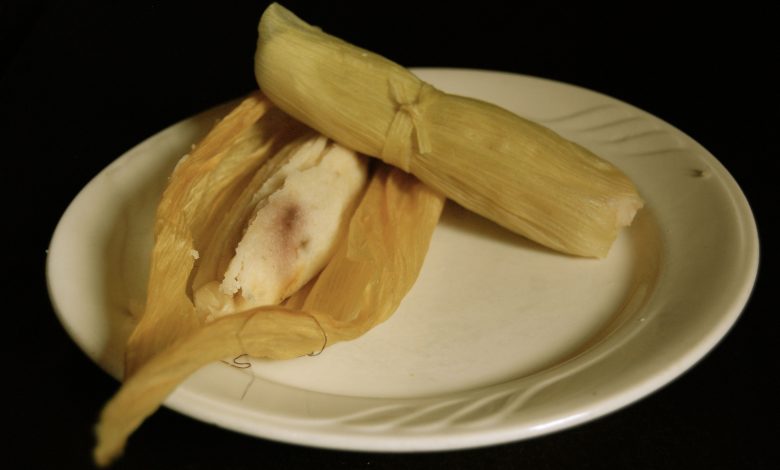Good to Eat and Good to, Um, Read

To eat — such as a tamale from the lady who every day sets up her pots under the Portal de Belen on Cuzco’s main square, or an anticucho (skewers of beef heart) from the vendors who set up at dusk on Maruri street — is not just to taste something delicious it is to satisfy the heart and the mind. Food is not just about nutrition, skill, and ingredients, it is also about stories and meanings.
But, like any text, food can be read in different ways that often tell more about context and the teller than they do about the food itself. And, one of the very big stories in Peru that often subsumes everything else, including food, is the power of its indigenous heritage, living or gone, and the reality of the Spanish invasion.
This idea struck home strongly while the articles about carnival were being prepared. In Cuzco there are two words for the festive carnival stew. It is called, as we noted, thimpu and puchero. The first word comes from Quechua while the second originates in Spanish
Nevertheless, a different arrangement takes place in the nearby city of La Paz. Though found in present-day Bolivia, La Paz and Cuzco have a very long historical relationship and share many cultural elements in common as two big cities of the southern highlands with very deep roots.
In La Paz both words are found. But, they refer to different dishes, although both are stewed and both are tied to carnival. Paceños insist on the difference. The ingredients are different as is the story they potentially tell. The one shouts out indigenous Bolivian roots, while the other declaims Spanish creole identity.

But La Paz is a city with two names, the one Spanish and the other indigenous, Chuquiago. It celebrates its duality in many historically driven ways, although the reality is far more complex and blended.
Cuzco, on the other hand has one name, from the Quechua, meaning navel they say. But, like La Paz, it also has two languages and two realities with blending. If there is a difference, besides the single dish in Cuzco and the separate dishes in La Paz, it is that Cuzco has a very complex relationship with its indigenous past of separation and pride, at the same time it developed a distinction between people around Spanish, in which the celebration of its Inca past makes it distinctive.
In contrast La Paz historically was a creole island of Spanish in a sea of indigenous Aymara and Quechua.
The points are of more than academic interest. The excellent Peruvian food writer, Catherine Contreras locates these names differently and therefore gives them a different story. She says “timpu,” as she spells it, “in Cusco, Puchero in Arequipa” and then she adds a different term which she draws together with these, “sancochado in Lima.” She keeps the Quechua term for Cuzco’s meal, uses the Spanish term for the dish found in the other major city of the South, Arequipa, which forms part of an historical economic triangle with Cuzco and La Paz, while reserving a different Spanish word for the city that was the center of Spanish South America, Lima, though it too has indigenous roots and a large population of people with Amerindian background.
These separations are particularly fascinating, because in the next breath Contreras joins the three in one to call it “the Mestizo dish of generous ingredients and rich broth.”
In this simple, almost off handed sentence, she creates a very different story for the dishes. Instead of having a local history of separation and joining of Indian and Spanish in different, particularly local ways, Cardenas locates them in what for many has become the singular history of Peru located in a new man, an American man, the Mestizo who has both Spanish and Indian heritage.
This is the story with which the twentieth century Peruvian state, like many other Latin American states, envisioned its people and therefore its history. It is also the story strongly contested by an Indian movement ensconced in Bolivia with important resonance in Cuzco and the southern highlands.
Contreras suggests the importance of this point when she continues: “The Mestizo dish . . . reclaims its place at the table, it is at the head of Peruvian’s preferences and is the well flavored lead actor in restaurant menus that seek to attenuate with this great stew the seasonal chill.”
Perhaps with out meaning to, she is not only making a point about a delicious dish with many regional variants that is reclaiming a place in the hearts and palates of contemporary Peruvians and international aficionados of Peruvian cuisine, she is also emphasizing the political and therefore cultural importance of a dish for a certain contemporary Peruvian identity.
People eat, to drive away the cold for sure. But they also eat to tell themselves stories. Part of the great story of Peruvian cuisine is the many ways, each with differentiated political and economic significance, in which the Inca, the mixed, and the Spanish origin foods were joined and separated not just in the pot, or on plates, but in the stories they told and continue to tell.
Now to eat that tamale, though first I have to take off its tightly tied and steamed husk . . . Oh, wait. Tamales aren’t about carnival. They are typically eaten at the other end of the rainy season, November first and second, the Days of the Living and the Day of the Dead. Oops. I think . . .





You couldn’t be more precise!